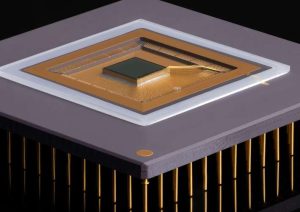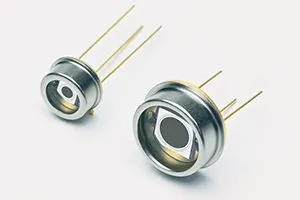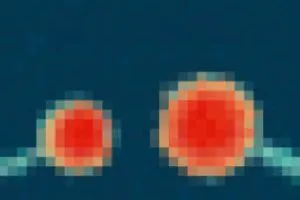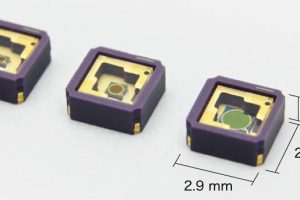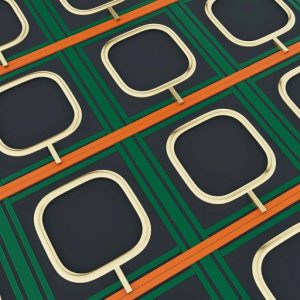
Development has been lead by Professor Robert Henderson, head of Edinburgh’s CMOS Sensors and Systems Group, and a pioneer of SPAD-based image sensors: he co-designed one in 2005, and in 2013 lead the development of STMicroelectronics’ SPAD-based time-of-flight sensor that is in more than a billion smartphones today.
About Singular’s devices he said: “There can be no doubt that SPAD sensors are the future of digital imaging, but their use to date in commercial devices hasn’t extended much beyond time-resolved counting of photons. Computational cleverness can be the difference. We are building next-generation imaging sensors, where the computation is done digitally at the pixel level – exactly where the photons arrive.”
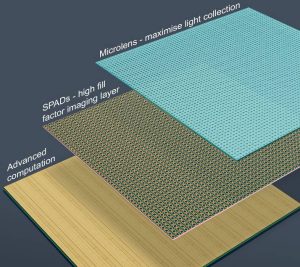
The company’s devices consist of a single-die CMOS SPAD array (close-up above), which is stacked onto a CMOS processing logic die in the same package – processing is both intra-pixel and inter-pixel. Ann integrated micro-lens array completes the device.
Stacking allows much of the SPAD die surface to be allocated to photon detection, and for its semiconductor processing to be differently optimised than the bottom logic die.
‘Andarta’ is one of the initial sensors: a 512 x 512 SPAD array of 10.17μm pixels backed up by 100 million transistors that offer 0.5Top/s of computation. Its modes of operation include in-pixel auto-correlation measurements and image normalisation.
This was developed in conjunction with Meta (Facebook), and is optimised for medical imaging as it can ‘see’ rapid fluctuations in light as it passes through tissue. It can, for example “monitor the rate of cerebral blood flow at depths not currently possible with current sensors”, said Singular.
The other sensor is ‘Sirona’, a 1 x 512 SPAD-based line sensor capable of ‘TCSPC’ (time-correlated single photon counting) which can be used for Raman spectroscopy, ‘fluorescence lifetime imaging microscopy’ (FLIM), time-of-flight measurement “and quantum applications”, said the company. On-chip processing capabilities include histogramming and time-binning.
Within Sirona “two different types of SPADs are embedded within each pixel, one having better detection efficiency towards red side of the spectrum and other one towards blue”, company CTO and co-founder Aravind Venugopalan told Electronics Weekly.
Singular has been operating quietly for a while.
“We are in a unique position where we already have commercially available products and are generating revenue in our first year of incorporation,” said CEO Shahida Imani. “With even more advanced sensors coming to the market in 2025, we are well positioned to lead SPAD-driven imaging.”
Singular Photonics‘ two products will be on show at SPIE Photonics West in San Francisco next week (28 – 30 January 2025).
SPADs?
SPADs are semiconductor photo-diodes that operate with such high reverse-bias that carrier avalanches are caused when a photon lands.
As such, a SPAD pixel is either completely off, or briefly fully-on. This switching behaviour can be very fast – picoseconds rather than nanoseconds.
Although their output is binary, the average rate at which they switch is related to the incident photon flux, hidden by statistical timing noise – hence the need for timing logic and averaging or histogramming to reveal the true flux level.
 Electronics Weekly
Electronics Weekly
